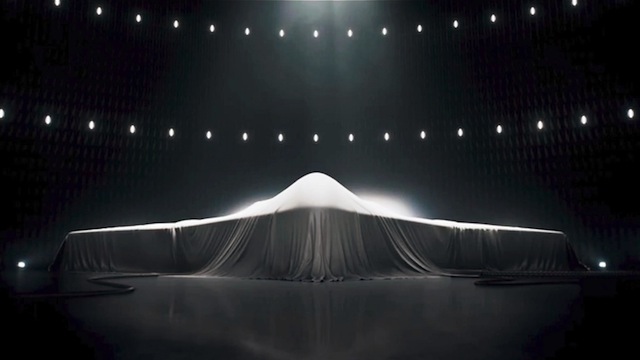North Korea did not shrug off the recent overflight of a 55-year-old B-52H bomber near Seoul that was escorted by US and South Korean combat jets, according to vice chairmen of the US joint chiefs of staff Gen Paul Selva.
The long-range strategic Stratofortress, built by Boeing from 1961-62, flew from Guam to Oswan Air Base in response to the reclusive republic’s fourth nuclear test. The US government had pledged a strong response, but was the West’s old bomber shtick stern enough?
“The intelligence reports that I get on the North Korean reaction to the B-52 flying a low approach at Seoul say no, they do not shrug – they actually pay attention,” Selva says at a Brookings Institution forum this week. “We have maintained a bomber presence in the Pacific since the early part of the last decade, and we will continue to do so.
“The North Koreans are very aware of the aircraft and the capabilities they represent.”

Lockheed Martin F-16 and Boeing F-15K "Slam Eagle" escort a seemingly unarmed B-52 over Oswan Air Base near Seoul.
US Air Force
The overflight came as the US air force received upgraded rotary launchers from Boeing that allow the B-52 to carry precision-guided cruise missiles and bombs internally. It also comes as the Pentagon embarks on a major recapitalisation of its nuclear arsenal, including a new strategic bomber, cruise missile and guided gravity bomb.
Despite considerable objection from arms control advocates, Selva contends those improved weapons are necessary as Russia and China construct “incredibly elegant and integrated surface-to-air missile defence systems” to keep America at arm’s length.
“They’re going to have to be capable of going into some of the most complex surface-to-air missile defence systems that humans have built. That’s the requirement,” he says of the bomber and its “long-range system of systems” – a new cruise missile and other more secretive armaments.
Selva says potential adversaries “have gone to school on the way we use air power” and are building air defenses to exactly counter it.
“Part of the process of undoing that advantage is to actually build a platform that has the range, the payload and the stealthiness to actually get inside of that network and accomplish the operational and strategic objectives that we need to accomplish,” he says. “That’s why the requirements are written the way they are.”

Northrop Grumman was selected last year to build a new, nuclear-armed strategic bomber.
US Air Force
US Strategic Command chief Adm Cecil Haney seconded Selva's sentiment at a Center for Strategic and International Studies event on 22 January, saying that it would be destabilising to allow American capabilities to atrophy.
Some have labelled the Long-Range Standoff (LRSO) cruise missile "destabilising and unnecessary" given the next-generation bomber’s requirement for radar-evading direct attack, but Haney disagrees.
“This whole art of [nuclear] deterrence is really about perceptions,” he argues. “You can’t be a one-trick pony. To not have that would be destabilising.”
Source: FlightGlobal.com



















